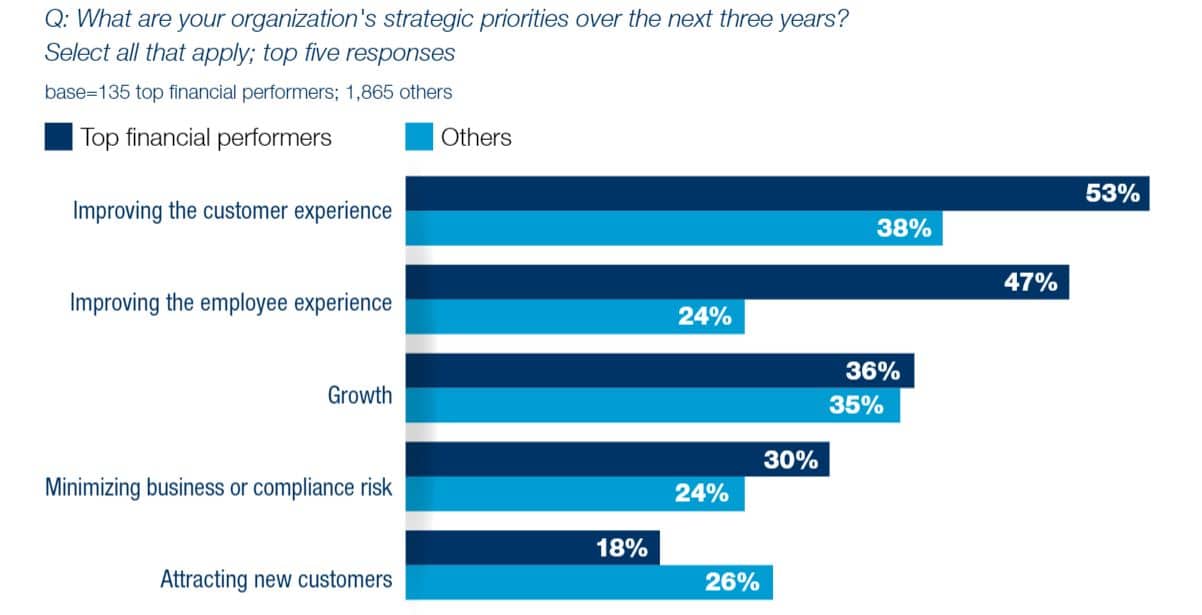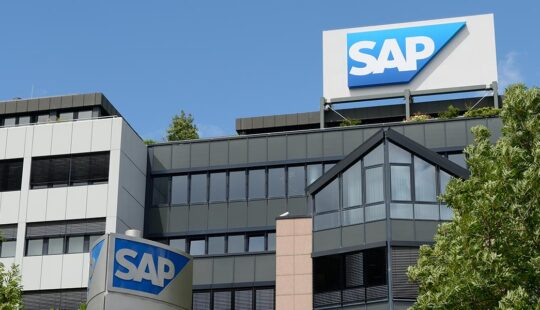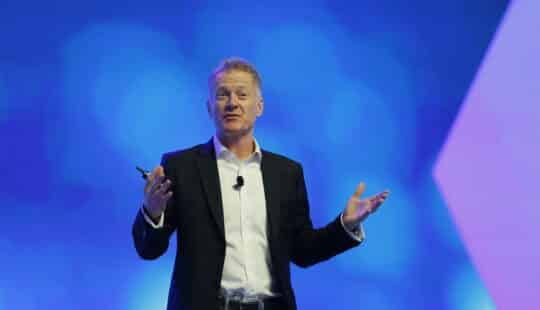Without question, small and medium-sized business companies are overburdened in every aspect of their business right now. Supply chain shortfalls – no matter how short-term – need to be addressed with new sources of capital, raw materials, and logistics. Attracting and engaging customers requires more diverse and digital channels to respond to changing demand. Even compliance with ever-evolving mandates for everything from employee and customer safety to financial reporting is challenging to navigate.
Such widespread operational disruptions are riddled with uncertainty. But more importantly, they reemphasize the importance of the customer experience, according to Oxford Economics.
In its report, “Digital, Resilient, and Experience-Driven,” the global economic consultancy and thought leadership firm found that 53% of top performers – companies with the strongest revenue growth and profit-margin change – consider the quality of their customer experience as their top strategic priority for the next three years. The rationale behind this finding is 100% clear among surveyed participants: deep, personalized connections support the resilience and agility needed to weather volatility and plan for growth in better times.

A focus on experiences, SAP
Guiding change and growth with sustainability directives
The quality of a customer experience can be measured in many ways. But for top performers surveyed in the Oxford Economics study, three attributes rank at the top of their list:
- High-quality products and services (88%)
- Competitive pricing (82%)
- Fast, convenient delivery of products and services (80%)
Individually, these elements of the customer experience are essential. But when combined, they can fuel a powerful customer experience that helps small and medium-sized business survive and thrive in today’s uncertain environment.
Take, for example, electronics manufacturing. Traditionally, this function is commonly relegated to the supply chain. Yet, it still plays a distinct role in the customer experience because product reliability and ease of use influence brand perception and sentiment. Every component must be designed, fabricated, and installed in ways that ensure continuous, high-performance operation, affordable and profitable pricing, and on-time delivery – all through environmentally sustainable means.
This real-life scenario and thousands of others help small and medium-sized businesses respond to constant change and position themselves for future growth. Often, use cases are inspired by sustainability goals that are similar to those featured in the United Nations’ (UN) Sustainable Development Goals.
The UN adopted these goals in 2015, recognizing that ending poverty and other forms of human deprivation go hand in hand with strategies that improve health and education, reduce inequality, and spur economic growth. Organizations can establish these value-based strategies with technology and contactless engagement to build resilient customer experiences – even if customers, vendors, partners, and employees change how they interact with each other and the business.

SAP
Building brand resilience with targeted, value-based experiences
The ability to shift customer experiences as people’s values and preferences evolve separates businesses that are agile from and those that required assistance. Companies that embrace digital transformation are best positioned to provide rich, meaningful experiences with their ecosystems.
To achieve the level of customer-centricity throughout the business, decision-makers require a better understanding of what shoppers value. They need to conduct a preliminary analysis of the “past norms” customers are buying, talking about, and abandoning altogether and “next norms” that are being embraced. Reviewing the insights based on categories (for example, demographics, geography, and psychographics) helps flesh out precise details for each persona, such as age, location, income, family status, interests, and goals.
With this insight, marketers can use this insight to determine which sustainability development goals are most relevant and meaningful to different customer segments. Then, individual campaigns can be created with the assistance of digital marketing tools to target each of those personas and later test, observe, and track results to refine segment-based on messaging and conversion.
Knowing – and delivering on – what matters most to customers
It’s clear that today’s disruption will continue to threaten every company’s success, potentially even their survival. But if they transform the customer experience around new sustainability values and with the right insights and technologies, small and medium-sized businesses can fuel the resilience and growth they will need to compete in the years ahead.
Discover how small and medium-sized companies can prepare for an uncertain economy by reading the Oxford Economics research study, “Digital, Resilient, and Experience-Driven.” And get a deeper dive into the importance of customer experience, by reading “The Customer Connection,” also from Oxford Economics. Follow through with an analysis of your business’s resilience and agility in 5 minutes using the IDC SME Analysis Tool, which assesses 5 key areas: strategic planning, processes, customer relationships, suppliers and distributors and people experience.
This article was originally featured on SAP BrandVoice, Forbes.



